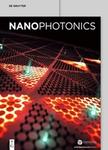版权所有:内蒙古大学图书馆 技术提供:维普资讯• 智图
内蒙古自治区呼和浩特市赛罕区大学西街235号 邮编: 010021

作者机构:Univ Alberta Ultrafast Opt & Nanophoton Res Lab Edmonton AB T6G 2V4 Canada
出 版 物:《NANOPHOTONICS》 (Nanophotonics)
年 卷 期:2017年第6卷第1期
页 面:235-257页
核心收录:
学科分类:070207[理学-光学] 07[理学] 08[工学] 0805[工学-材料科学与工程(可授工学、理学学位)] 0803[工学-光学工程] 0702[理学-物理学]
主 题:nanoplasmonics waveguides integrated optics ultrafast optics nonlinear optics magnetoplasmonics strong field phenomena
摘 要:As modern complementary-metal-oxide-semiconductor (CMOS) circuitry rapidly approaches fundamental speed and bandwidth limitations, optical platforms have become promising candidates to circumvent these limits and facilitate massive increases in computational power. To compete with high density CMOS circuitry, optical technology within the plasmonic regime is desirable, because of the sub-diffraction limited confinement of electromagnetic energy, large optical bandwidth, and ultrafast processing capabilities. As such, nanoplasmonic waveguides act as nanoscale conduits for optical signals, thereby forming the backbone of such a platform. In recent years, significant research interest has developed to uncover the fundamental physics governing phenomena occurring within nanoplasmonic waveguides, and to implement unique optical devices. In doing so, a wide variety of material properties have been exploited. CMOS-compatible materials facilitate passive plasmonic routing devices for directing the confined radiation. Magnetic materials facilitate time-reversal symmetry breaking, aiding in the development of nonreciprocal isolators or modulators. Additionally, strong confinement and enhancement of electric fields within such waveguides require the use of materials with high nonlinear coefficients to achieve increased nonlinear optical phenomenon in a nanoscale footprint. Furthermore, this enhancement and confinement of the fields facilitate the study of strong-field effects within the solid-state environment of the waveguide. Here, we review current stateof- the-art physics and applications of nanoplasmonic waveguides pertaining to passive, magnetoplasmonic, nonlinear, and strong-field devices. Such components are essential elements in integrated optical circuitry, and each fulfill specific roles in truly developing a chip-scale plasmonic computing architecture.